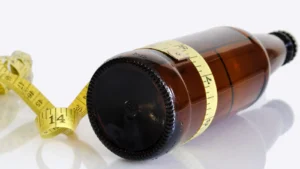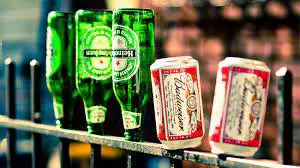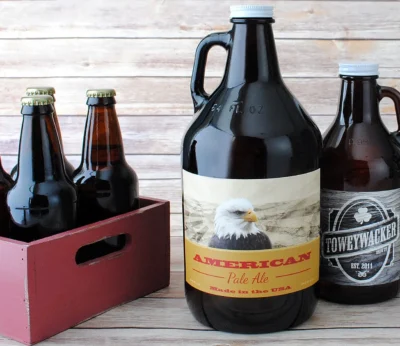Beer is undoubtedly one of the most popular beverages around the world, with a rich history and an incredibly diverse range of flavors and styles. From light lagers to hoppy IPAs, there is a beer for every taste preference. However, something that may not cross our minds as often is the beer bottle dimensions.
Beer bottle dimensions can vary significantly between different regions and can have an impact on the drinking experience, as well as on the manufacturing and distribution of the beverage.
In this blog post, we will explore the various dimensions of beer bottles and their significance in the world of beer. Whether you are a beer enthusiast, a brewer, or simply curious about the intricacies of beer packaging, this post will provide a comprehensive guide to the dimensions of beer bottles.
Standard beer bottle sizes and dimensions

Beer bottles come in a variety of sizes and shapes, with some regions having their own unique variations. However, there are a few standard beer bottle sizes and dimensions that are commonly used around the world.
Here are some of the most common:
- 12 oz. (355 ml) bottles: This is perhaps the most common beer bottle size in the United States. These bottles are typically 9 inches (22.9 cm) tall and have a diameter of 2.5 inches (6.4 cm).
- 22 oz. (650 ml) bottles: Sometimes referred to as “bombers,” these larger bottles are often used for high-alcohol or specialty beers. They are typically 11 inches (27.9 cm) tall and have a diameter of 3 inches (7.6 cm).
- 330 ml bottles: This is a common size for beer bottles in Europe. These bottles are typically 8.5 inches (21.6 cm) tall and have a diameter of 2.5 inches (6.4 cm).
- 500 ml bottles: Another popular size in Europe, these bottles are typically 9.5 inches (24.1 cm) tall and have a diameter of 2.75 inches (7 cm).
- 750 ml bottles: Often used for specialty beers or for sharing, these bottles are typically 11 inches (27.9 cm) tall and have a diameter of 3.25 inches (8.3 cm).
It’s important to note that these dimensions are just general guidelines and that variations in bottle shape and thickness can affect the actual dimensions. Additionally, some breweries may use their own custom bottle sizes and shapes.
Nonetheless, knowing the standard sizes and dimensions can be helpful for both consumers and brewers in determining portion sizes, storage capacity, and transportation needs.
How to measure the size of a beer bottle
Measuring the size of a beer bottle can be useful for a variety of reasons, such as determining storage capacity or selecting the right size for the koozie. Here’s how to measure the size of a beer bottle:
- Measure the height: Measure the distance from the bottom of the bottle to the top of the neck. This will give you the height of the bottle.
- Measure the diameter: Measure the widest part of the bottle, typically the base or midsection, to determine the diameter.
- Calculate the volume: Once you have the height and diameter measurements, you can use a formula to calculate the volume of the bottle. The formula for the volume of a cylinder is V = πr^2h, where V is the volume, π is a constant (approximately 3.14), r is the radius (half the diameter), and h is the height. Simply plug in the values for r and h to calculate the volume in cubic units (e.g., cm^3 or oz).
It’s important to note that the thickness of the glass or plastic of the bottle can affect the actual volume, so these measurements will only provide an approximation. Nonetheless, measuring the size of a beer bottle can be a helpful tool for beer enthusiasts and brewers alike.
Differences between European and American beer bottle dimensions
European and American beer bottle dimensions differ in a few significant ways. Here are some of the main differences:
- Size: The most notable difference is the size of the bottles. European beer bottles are generally smaller than American beer bottles. The most common European beer bottle size is 330 ml (11.2 oz), while the most common American beer bottle size is 12 oz (355 ml).
- Shape: European beer bottles are typically taller and narrower than American beer bottles. This shape is known as the “Euro” or “Steinie” bottle and is designed to be easy to hold and pour. American beer bottles, on the other hand, are typically shorter and wider.
- Closure: European beer bottles often have a crown cap, which is a metal cap that is removed with a bottle opener. American beer bottles may have a twist-off cap, which can be removed by hand.
- Label size: European beer bottles often have smaller labels than American beer bottles due to the smaller size of the bottle. This can be challenging for brewers who want to include a lot of information on the label.
These differences in beer bottle dimensions can have an impact on the drinking experience, as well as on the manufacturing and distribution of beer. For example, the smaller size of European beer bottles may make them easier to transport and store, while the wider shape of American beer bottles may be more convenient for some drinkers.
Additionally, the different closure types can affect the shelf life of the beer, as a crown cap may provide a tighter seal than a twist-off cap. Nonetheless, both European and American beer bottles have their own unique advantages and remain popular choices among beer enthusiasts.
How to choose the right beer bottle size for home brewing

Choosing the right beer bottle size for home brewing is an important decision, as it can affect the carbonation, storage, and serving of the beer. Here are some tips on how to choose the right beer bottle size for home brewing:
- Consider the beer style: Different beer styles may require different bottle sizes, depending on the desired carbonation level and serving size. For example, high-alcohol beers may be better suited for larger bottles, while lighter beers may be better in smaller bottles.
- Determine the serving size: Consider how much beer you want to serve at a time. If you plan to share your beer with others, a larger bottle may be more convenient. If you prefer to drink your beer in smaller quantities, a smaller bottle may be a better choice.
- Evaluate storage space: Make sure you have enough space to store your beer bottles in a cool, dark place. If you have limited storage space, smaller bottles may be a better choice.
- Choose a bottle that is appropriate for carbonation: Some beer bottles are better suited for carbonation than others. For example, bottles with thick glass and a crown cap are typically better for carbonation than twist-off bottles.
- Consider labeling and branding: If you plan to give your beer as a gift or sell it, consider the size and shape of the bottle in relation to your labeling and branding needs.
In general, 12 oz (355 ml) bottles are a good all-around choice for home brewing, as they are widely available and easy to store. However, it’s important to consider the specific needs of your beer and your brewing process when selecting the right beer bottle size.
Common beer bottle shapes and their dimensions
Beer bottles come in a variety of shapes and sizes, each designed to suit different needs and preferences. Here are some common beer bottle shapes and their dimensions:
- Euro or Steinie: This bottle shape is tall and narrow, with a slight bulge in the neck. It is commonly used in Europe and is designed to be easy to hold and pour. The most common size for this bottle is 330 ml (11.2 oz), with a height of around 9.5 inches (24 cm) and a diameter of 2.5 inches (6.5 cm).
- Longneck: This bottle shape is tall and narrow, with a gradual slope from the neck to the base. It is commonly used in the United States and is designed to be easy to stack and transport. The most common size for this bottle is 12 oz (355 ml), with a height of around 9 inches (23 cm) and a diameter of 2.5 inches (6.5 cm).
- Belgian: This bottle shape is short and stubby, with a rounded bottom and a cork or wire-cage closure. It is commonly used for Belgian-style beers and is designed to be easy to pour and share. The most common size for this bottle is 750 ml (25.4 oz), with a height of around 9 inches (23 cm) and a diameter of 3 inches (7.6 cm).
- Bomber: This bottle shape is similar to the Belgian bottle but with a long neck and a cork or screw-cap closure. It is commonly used for high-alcohol and specialty beers and is designed for sharing. The most common size for this bottle is 22 oz (650 ml), with a height of around 11 inches (28 cm) and a diameter of 3 inches (7.6 cm).
- Growler: This bottle shape is typically large and cylindrical, with a flip-top or screw-cap closure. It is commonly used for draft beer and is designed for take-home consumption. The most common size for this bottle is 64 oz (1.9 L), with a height of around 11 inches (28 cm) and a diameter of 5 inches (13 cm).
These are just a few examples of the many beer bottle shapes and sizes available. When selecting a beer bottle, it’s important to consider the specific needs of your beer and your drinking preferences, as well as the requirements of your brewing and storage process.
What are the most popular beer bottle sizes?

The most popular beer bottle sizes vary by region and country, but some of the most commonly used sizes include:
- 12 oz (355 ml): This is one of the most widely used beer bottle sizes, particularly in the United States. It is a convenient size for individual servings and is easy to store and transport.
- 330 ml (11.2 oz): This is a popular beer bottle size in Europe and is commonly used for lagers and other light beers. It is slightly smaller than the 12 oz size but is still a convenient size for individual servings.
- 500 ml (16.9 oz): This is a popular beer bottle size in Europe and is commonly used for stronger beers and ales. It is also a common size for bottled beers in pubs and bars.
- 22 oz (650 ml): This is a popular beer bottle size in the United States and is commonly used for high-alcohol and specialty beers. It is often referred to as a “bomber” or a “bomber bottle” and is typically designed for sharing.
- 750 ml (25.4 oz): This is a popular beer bottle size for specialty and Belgian-style beers. It is often referred to as a “wine bottle” and is typically used for sharing.
These are just a few examples of the most popular beer bottle sizes. Ultimately, the right size for your beer will depend on the specific needs of your brew, your serving preferences, and the storage and transport options available to you.
How to label beer bottles based on their dimensions
Labeling beer bottles based on their dimensions is an important step in the beer bottling process, as it helps to identify the contents of each bottle and ensure that they are stored and served correctly. Here are some tips for labeling beer bottles based on their dimensions:
- Choose the right label size: The size of your label should match the size of your beer bottle. Make sure to measure the height and width of your bottle and choose a label size that will fit comfortably and provide enough space for your branding and other important information.
- Design your label: Your label should include the name of your beer, the alcohol content, and any other important information, such as the brewing date or batch number. You may also want to include your logo or other branding elements to help your beer stand out on store shelves.
- Print your labels: Once you have designed your label, you can print it on a standard inkjet or laser printer using label paper or a label-making machine. Make sure to print a few test labels first to ensure that they fit properly and look the way you want them to.
- Apply the labels: To apply the labels, start by cleaning and drying the bottles. Then, peel the backing off the label and carefully apply it to the bottle, making sure to smooth out any wrinkles or air bubbles. You may also want to consider adding a clear label over the top of your printed label to protect it from damage during storage and transport.
By following these simple steps, you can easily label your beer bottles based on their dimensions, ensuring that your beer is properly identified and ready to be enjoyed by beer enthusiasts.
Conclusion
If you want to know the different beer bottle dimensions, then you are just in the right place. Understanding beer bottle dimensions is important for brewers, retailers, and beer enthusiasts alike.
By knowing the common sizes and shapes of beer bottles, as well as how to measure and label them, you can ensure that your beer is properly stored, transported, and enjoyed. Whether you are brewing beer at home or stocking your store shelves, taking the time to learn about beer bottle dimensions can help you create a better beer-drinking experience.


